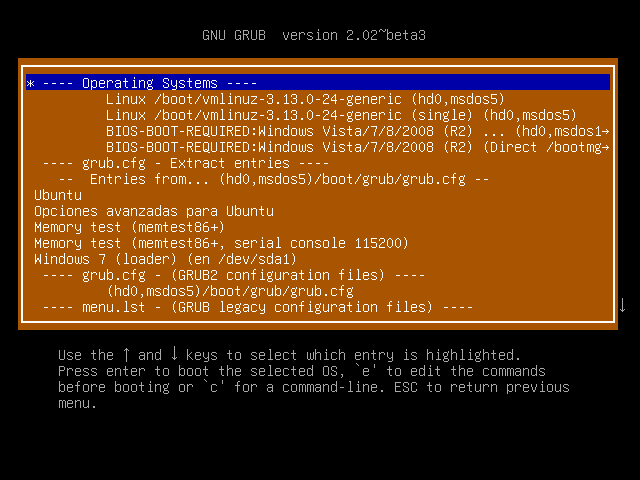Breaking News
Main Menu
Boot Windows Iso From Grub 2 Configuration
четверг 24 января admin 45
Welcome to the GRUB 2 bootloader tutorial! You must have read my GRUB legacy guide. In the last two and a half years, it alone has garnered some half a million views, proving to be quite popular and useful to computer users worldwide. I want to recreate the same success with my GRUB 2 tutorial. My goal is to provide people running any flavor of UNIX-like operating systems or multi-booting their computers and using GRUB as their bootloader with a simple, no-nonsense, step-by-step, proven and working tutorial that should allow them to quickly, easily and painlessly control the boot sequence of their systems. In this tutorial, you will learn how to work with GRUB 2, add and remove menu entries, customize titles and boot options, dual-boot and triple-boot operating systems, combine legacy GRUB and GRUB 2, and we will even see how Windows fits into this scheme. After that, we will learn how to recover from errors and mistakes.
Table of Contents • • • • • • • • • • • • • • • • • • • • • • • • • • • • • • • • • • • • • • • • • • Warning Warning! GRUB 2 is still mostly beta software. Although it already ships with Ubuntu flavors, it is not yet production quality per se. You can probably use it without any troubles, although there is a slight, remote yet possible chance of damage.
Dec 20, 2017 - You can use these instructions to create a bootable USB drive with GRUB that can run the. Mount your Windows 10 installation ISO. Create a grub.cfg GRUB configuration file at /mnt/part1/grub-boot/grub/grub.cfg. Super GRUB2 Disk helps you to boot into most any Operating System (OS) even if. 2.01 beta 3 grub.cfg Extract entries option; grub.cfg – (GRUB2 configuration files). Windows Vista/7/8/8.1; Windows NT/2000/XP; Windows 98/ME; MS-DOS; FreeDOS. Version (EFI); Additional Floppy, CD and USB in one download (ISO).

You need to be aware of this. Furthermore, whenever handling delicate tasks like the critical functions of the system, disk partitioning, boot sequence, imaging, etc, you should always be prepared for the worst. This means: • You must have a solid, proven backup procedure for all your data. Stickman killing games. • You must possess the tools and the knowledge to quickly recover from disasters.
This includes being able to restore a previous system image, fix broken configurations, restore the bootloaders, and more. • You must be confident in what you are doing. Now that we know this, let us proceed cheerfully and safely.
Just remember that GRUB 2 is still beta. Although the same can be claimed for Google Mail, which was beta for some six years or so, you must exercise caution. What's more, the contents and relevance of contents in this tutorial might yet change as GRUB 2 makes into the production, so stay tuned for any updates. GRUB 2 roadmap This is something you should consider before trying GRUB 2. When will GRUB 2 become the de facto bootloader for UNIX-like operating systems? Currently, GRUB legacy is doing fine and will continue for many more years.
Given the long-term support by companies like RedHat and Novell for their server distributions, GRUB legacy is going to remain the key player for at least 5-10 years. On desktops, the adoption rate may be faster, but do not expect any miracles too soon. Nevertheless, it does not hurt to start exploring.
